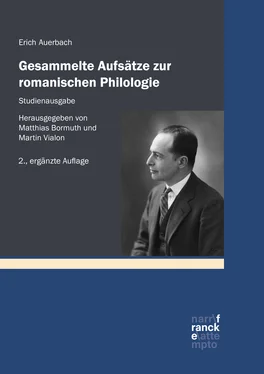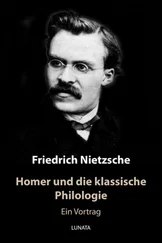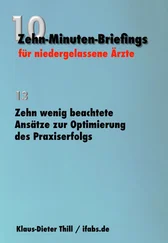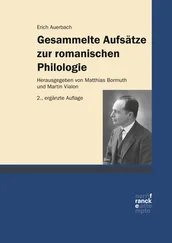This motif signifies here, that Christ-Beatrice does not yet appear in her true and unveiled form; this form develops, as one knows, gradually during the ascension to the highest heaven ( Par . 30, 16–33).
Whatever, therefore, Beatrice’s general symbolical value may be, here her appearance is a figure of the appearance of Christ25 in the midst of the angels and the resurrected; and the cry veni sponsa is an appeal to arise ( si levar ; saliva ), addressed to the angels and the souls of the righteous. It may be understood in an eschatological way, as the words of Christ (Solomon, quasi dal ciel messo , as a type of the Saviour) at the last judgment ( novissimo bando ), or in a more mystical sense, as an appeal to inner devotion and contemplation of Christ. In fact, the verse veni sponsa , with the following coronaberis, has always been interpreted as an appeal to the Church or Christianity. To prove this I shall quote some texts beginning again with Gregory ( Super Cant. expos., Patr. Lat ., LXXIX, 511):
… Potest … intelligi quod ter dicitur veni. Venit enim sponsa sancta ad Christum, dum in hoc mundo vivens, bona quae potest operatur. Venit quando in hora mortis anima, ipsa videlicet sponsa, a carne exuitur. Venit tertio, quando in die iudicii ultimi carnem resumit, et cum Christo thalamum coelestem ingreditur. Ibi quippe omnium laborum suorum praemia consequitur; ibi, iam omnino prostratis et exclusis hostibus, gloriose coronatur … (there follow speculations on the names Amana, Sanir, etc.)
Much more mystical is the conception of Richard of St VictorRichard v. St. Victor (Explic. in Cant. XXV, Patr. Lat ., CXCVI, 478):
Libanus mons est, in quo crescunt myrrha et thus. Dicitur autem Libanus candidatio et dealbatio. Vocat ergo Christus sponsam de Libano, cum per mortificationem peccatorum et carnalitatis et devotionem orationis mundatam et candidatam invitat ad supernam remunerationem. Quod autem non solum duplicata voce, sed etiam triplicata hortatur ut veniat, immensitatem desiderii et amoris quem habet ad eam insinuat, et ut trina repetitio immensitatis et firmitatis sit attestatio; funiculus enim triplex difficile rumpitur. Item multiplicata repetitio vocationis et gratulationem indicat, qua liberationi eius de praesenti miseria congaudet. Innuit quoque quanto desiderio hanc celerius fieri optet. Iterum enim atque iterum repetita vocatio accelerantis pariter et gaudentis affectum exprimit. Ideo etiam eam toties vocat, ut iterata vocatione magnitudinem felicitatis ad quam vocatur insinuet; ut etiam trina vocatio Trinitatis indicat fruitionem, quam perceptura est post laborem, quae fruitio est aeterna beatitudo. Et cum eam vocat, etiam ei de quibus remuneranda sit praenuntiat: coronaberis. …
Very similar, sometimes using the same words ( funiculus triplex ), is the comment of Bernard’s disciple Gilbert of HoilandGilbert v. Hoyland, who continued the Sermons on the Canticles;26 he identifies those coming from Lebanon with those clothed in white robes of the Revelation (ibid., CLXXXIV, 149).
Perhaps our method of demonstration, with its great number and variety of figurative texts, may seem too laborious to the reader, and he may ask if DanteDante really remembered all these complicated interrelations. But it is only to us that the figurative system seems laborious, complicated and sometimes absurd; for the Christians of the twelfth and thirteenth centuries it was daily bread, as every sermon of that period shows. However, already in DanteDante’s time, and even more shortly afterwards, there appear signs of decay, at least in Italy; HumanismHumanismus introduces heterogeneous elements, and the liberty and finesse of the figurative method lose their creative powers. The ancient commentators on the Comedy give many figurative explanations; but most of them are comparatively crude or pedantic, without the sense of nuances and without DanteDante’s large knowledge of the tradition. Again I must insist upon the fact that within the limits of the tradition, within the limits of certain established customs of combination, there was much liberty of interpretation. These limits, however, seem to me to be transgressed, if one understands the cry veni sponsa as an invitation to Beatrice.
More than fifty years ago Paget ToynbeeToynbee, P. discovered that Rahab, the harlot in Joshua, chs. 2 and 6, who holds a very distinguished place in the heaven of Venus ( Par. 9, 115–126), is to be considered as a type of the Church. He published his discovery, based on passages from IsidorusIsidor v. Sevilla and Petrus ComestorPetrus Comestor, in The Academy of September 12, 1894, p. 216; he also stressed the fact that Rahab is one of the ancestors of Christ (Matth.Matthäus (Evangelist) 1, 5) . E. RostagnoRostagno, E. gave an account of Toynbee’s article in Bullettino , II, 94; this account only is available to me at the moment. There cannot be the slightest doubt that Toynbee was right, and that his discovery is indispensable for the understanding of DanteDante’s verses. Nevertheless, it does not seem to have penetrated into all of the important commentaries and commented editions. ZingarelliZingarelli, N. ( Dante Dante , 3a ed., p. 1205) and H. Flanders DunbarFlanders Dunbar, H. ( Symbolism , p. 54) developed it further, and it is recorded in the edition CasiniCasini, T.-BarbiBarbi, M.; but the ninth edition of ScartazziniScartazzini, G. A.-VandelliVandelli, G. (1932) still ignores it. The verses in question are the following:
Tu vuo’ saper chi è in questa lumera
che qui appresso me cosi scintilla,
come raggio di sole in acqua mera.
Or sappi che là entro si tranquilla
Raab; e a nostr’ ordine congiunta,
di lei nel sommo grado si sigilla.
Da questo cielo, in cui l’ombra s’appunta
che’l vostro mondo face, pria ch’altr’alma
del triunfo di Cristo fu assunta.
Ben si convenne lei lasciar per palma
in alcun cielo de l’alta vittoria
che s’acquistò con l’una e l’altra palma,
perch’ella favorò la prima gloria
di Josuè in su la Terra Santa
che poco tocca al papa la memoria.
The book of Joshua, especially its first chapters, has been interpreted from the very earliest times of Christianity as a figure of the appearance of Christ; all the details of the passing over the Jordan and of the conquest of Jericho have entered into the framework of this figura , one of the most famous and popular of Christian Antiquity and the Middle AgesMittelalter. We even possess an illuminated manuscript, the Joshua Roll of the Vatican, executed in the sixth century, probably a copy of the earlier original, which unmistakably shows Joshua as a type of Christ. But already to TertullianTertullian this figurative relation was quite familiar: he explains it in the treatise Adv. Marcionem (3, 16), emphasizing the identity of the names Joshua and Jesus (cf. our note 9). IsidorusIsidor v. Sevilla gives a full description of the details, and his passage concerning Rahab,27 quoted by ToynbeeToynbee, P. and RostagnoRostagno, E., was reproduced or paraphrased many times during the Middle Ages, not only by Petrus ComestorPetrus Comestor in his Historia Scholastica , but also by another author familiar to DanteDante, Petrus DamianiPetrus Damiani,28 who plays a prominent part in the heaven of Saturn ( Par . 21). All these ancient commentators say, with slight variations, that the house of Rahab alone with all its inhabitants escaped destruction just as the Church will alone be saved; and that she was freed from the ‘fornication of the world’ by the window of confession, in which she bound the scarlet thread, sanguinis Christi signum . Thus, she became figura ecclesiae , and the scarlet thread (just like the posts struck with the blood of the Lamb, Exod. 12) became a symbol of Christ’s redeeming sacrifice. The conception of Jericho as eternal perdition was supported by the parable from LukeLukas (Evangelist) 10, 30 ( homo quidam descendebat ab Jerusalem in Jericho, et incidit in latrones …), generally interpreted as a figure of the fall of man. In the same way, the victory gained con l’una e l’altera palma seems to allude to the victory of Joshua won with outstretched hands (Exod. 17 with Jos. 8; cf. Sir. 46, 1–3), as a figure of the victory of Christ, whose hands were outstretched on the cross.
Читать дальше












